My Secrets to a Low Maintenance Garden
 Thursday, April 15, 2010 at 7:02PM
Thursday, April 15, 2010 at 7:02PM I am a lazy gardener. I like sitting in my garden listening to birds, but I don't want to be a slave to weeds and overgrown shrubs and demanding, finiky flowers. Most of my garden is low-maintenance, and that might surprise some people. A comment I often get is, "This must take a lot of work!"
Not really.
Of course, I do have a big garden, and that takes more work than a small space. But I have a full time job and don't have helpers other than my husband, and I find it manageable. Here are my secrets to a low-maintenance garden:
1. Cover the ground. Weeds love bare spots and will fill in whatever space you don't.
I use a lot of mulch. In my area pine straw and woods chips are readily available, and that is what I primarily use. I don't like gravel, as it tends to be hard to walk on and weeds grow through it easily. If you use gravel, be sure there is an excellent weed barrier underneath.
I also have planted a lot of ground covers, including indigofera, mondo grass, hellebores, vinca minor, and many others. Be careful where you plant ground covers, because they will spread. Only plant them where you truly want them to cover the ground. Mondo grass covers part of the hillside in the woodland garden, along with trees and shrubs.
Mondo grass covers part of the hillside in the woodland garden, along with trees and shrubs.
Brick, stone, even wood and concrete are great hardscape choices. If you struggle with weeds and poor plant growth under a large tree, consider putting in a patio with a couple of comfortable chairs and a little table. It is low maintenance and is a comfortable spot for visiting with a friend or reading a book. If you are putting in hardscape near trees remember to protect tree roots during construction. Also, don't put solid pavement directly over those roots, because this will prevent nourishment and moisture from getting to the roots.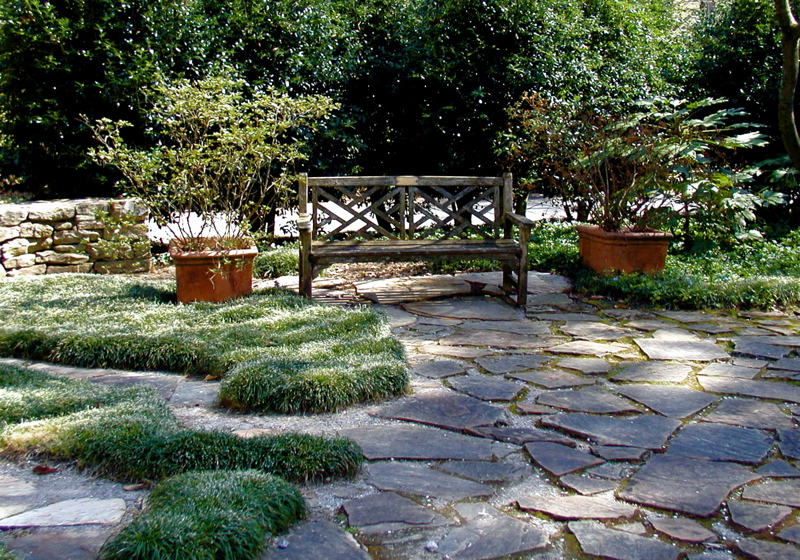 This stone patio at Birmingham Botanical Gardens is accented with modo grass for an easy-care, yet lovely retreat.
This stone patio at Birmingham Botanical Gardens is accented with modo grass for an easy-care, yet lovely retreat.
2. Plant colorful shrubs and trees. Other than occasional pruning or fertilizing, which is usually no more than once a year, they require little attention. In my spring garden I get a lot of bang from the colorful foliage of Japanese maples and from flowering trees like dogwood, magnolia, and redbuds. Flowering shrubs such as forsythias, azalea, fothergilla, viburnum, weigela, and spirea provide months of successive color. Many shrubs have colorful foliage, too, with leaves that may be varying shades of green, yellow, or purple. Some have interesting variegation. Even without annuals or perennial flowers my garden would be colorful.
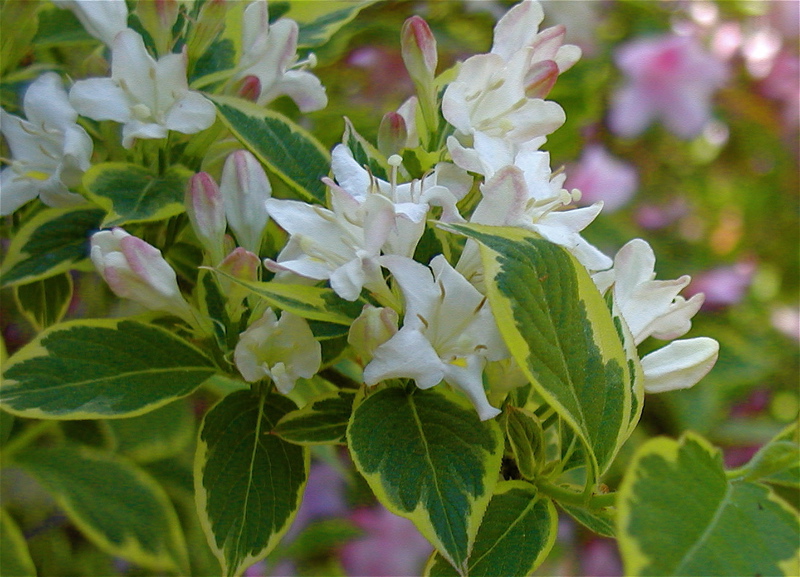 Variegated weigela has beautiful foliage, as well as spring-time flowers.
Variegated weigela has beautiful foliage, as well as spring-time flowers. Japanese maples and colorful azaleas provide a powerful punch of spring-time color.
Japanese maples and colorful azaleas provide a powerful punch of spring-time color.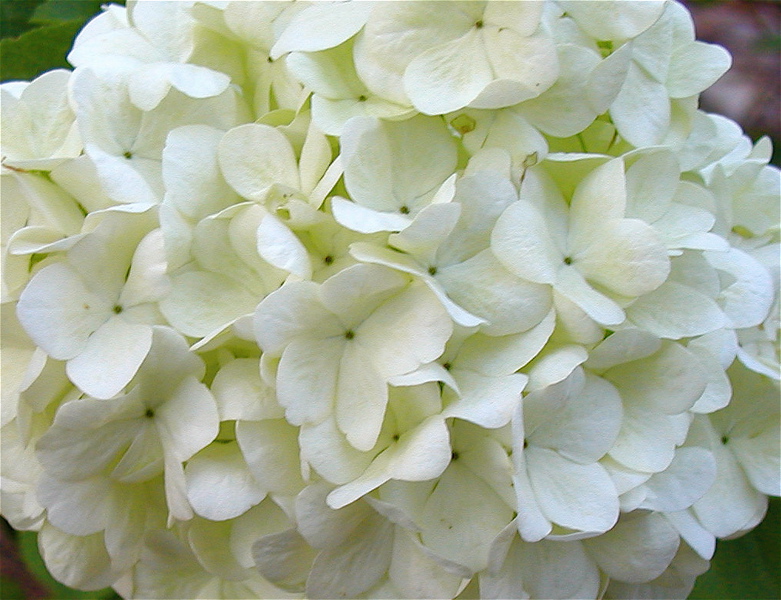 Snowball viburnum grows up to fifteen feet tall and has enormous flowers in mid spring.
Snowball viburnum grows up to fifteen feet tall and has enormous flowers in mid spring.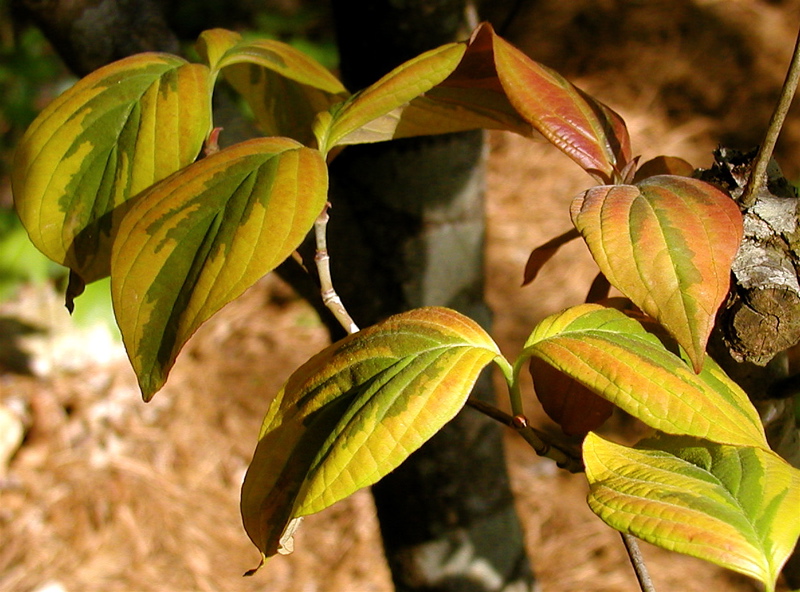 The Cherokee red dogwood has fabulous variegated foliage, as well as beautiful red blooms.
The Cherokee red dogwood has fabulous variegated foliage, as well as beautiful red blooms.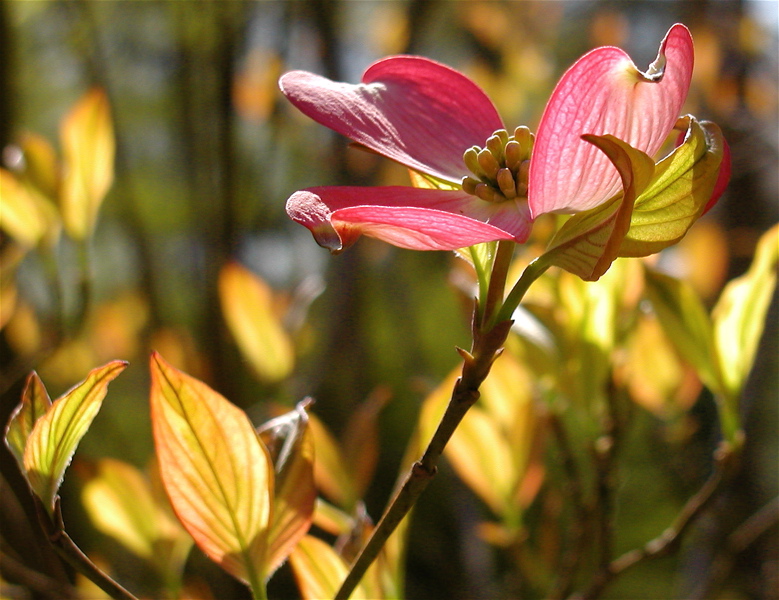
3. Keep some wild area. A wooded area filled with native trees and shrubs is a haven for wild life. If the natural area is bordered with attractive shrubs, lawn, or ground cover it will look neat. You will enjoy the sounds and antics of birds, squirrels and other woodland creatures.Open lawn is bordered by woodland.
4. Don't plant stuff in the middle of your lawn. Trees and shrubs should be incorporated into planting or natural areas, so you can easily mow the grass without having to tediously go around a bunch of trunks.The tree in the middle of this lawn area has a large mulched area around it to make mowing easier.
5. Keep your lawn mowed at its highest recommended height. Longer leaf blades allow for more photosynthesis, and your grass will be healthier, feel plusher underfoot, and you will mow less often.
6. Plant trees, shrubs, and flowers that are appropriate for the location.
Check hardiness zones, and light, soil and water requirements when purchasing plants. If your area suffers from frequent drought, don't plant a thirsty lawn or moisture loving flowers!
Consider the ultimate size of the plant. Don't put a shrub that will grow to ten feet in front of your living room window! Don't plant shrubs too close together. Give them space to reach their natural potential.
7. Accept that low maintenance does not mean no maintenance. If you do those chores that are unavoidable on a regular schedule, things won't get out of hand. I am in the ten weeds a day camp. Pulling ten weeds takes a minute or so and ultimately prevents thousands of weedy offspring. Also pull weeds after a rain; it's much easier because the ground is soft.
A low maintenance garden may be a lot of work initially. Planting trees and shrubs, establishing ground covers, and building hardscape all take time, effort, and money; but it is worth it, for once it is done you can spend most of the year just sitting back and listening to the birds.
Are you a lazy gardener? You, too, can have a beautiful, low-maintenance garden.
Blessings. Deborah